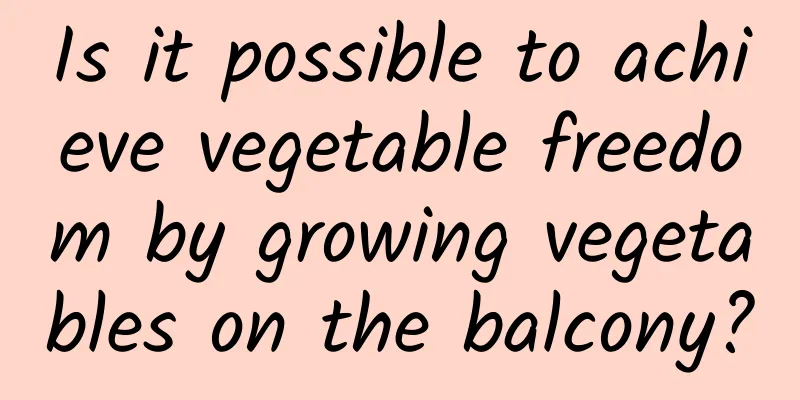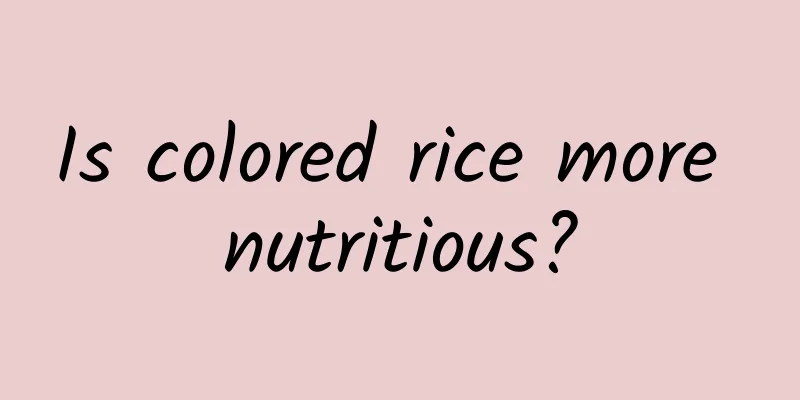Is it possible to achieve vegetable freedom by growing vegetables on the balcony?

|
Now everyone knows that vegetables are worth growing. Imagine this: you get home in the middle of the night, hungry and bored, your freezer is full of frozen baked codfish pizza, and there is only a handful of suspiciously yellow leeks in the back of the refrigerator - but all you want is a bowl of plain plain noodles. So you go to the balcony, cut a handful of green leaves, blanch them in boiling water, put an egg on the noodles, and add a few drops of sesame oil... The sweet fragrance of carbohydrates and fresh vegetables explodes on your taste buds. Yes, growing a small pot of vegetables is one of those habits that can increase your quality of life at a very low cost. However, the dream road to the freedom of vegetable farming is (not surprisingly) full of boring questions. In addition to the philosophical thinking of "the unit price of each square meter of land is 58,000 yuan, and it can produce 80 yuan worth of strawberries every month, the question is: which will come first, the return on investment or the end of One Piece", we also encounter the following in our daily life: 1. The potting soil is moldy and infested with insects; 2. The harvest season has not yet arrived when you want to eat it; 3. You can’t finish eating them during the harvest season; 4. The seeds were knocked over by a cat just after they were sown. At a young age, she experienced the bitterness of Cinderella kneeling in the mud to pick up the seeds. After years of hard practice, I finally realized that reality and imagination are not from the same mother. What to expect when growing your own vegetables Instagram style, grape greenhouses in lofts with 5-meter ceilings, and internet celebrity rural style videos will not give you the answer. Most of the time, it is unrealistic to achieve vegetable freedom by growing vegetables yourself. I did the math once: in a world without extreme cold or heat, torrential rain or typhoons, to barely supply a family of two with vegetables, with low technology and management, you would need about 20 square meters of sunny land and an average of 2 hours of work per day. But most of the time, all you have is a 10cm-wide indoor windowsill and a quick glimpse under the stars and moon. A little green on the balcony | Pixabay What can you grow on a small city apartment balcony? In addition to "what do I like to eat", the first question you need to consider is: how many times do you want to eat it? In other words, before you sow the seeds, you have to think about the quality of a particular plant's output per unit of time and space. If you plant bean sprouts, the growth cycle may take 2 to 4 weeks, and you can only repot and plant other things after the harvest; if you plant beans, you have to wait 3 to 6 months to harvest the beans before repotting and planting other things; and if you plant fruit trees/berries, you can harvest 1 to 2 times a year, and it will occupy this space for a long time and you cannot plant other things. Plan your planting plan in advance to live a sustainable vegetable life | wallpaperflare If you think about it this way, the plants that will yield the most benefits and cause the least trouble are those that don't require a lot of root space, whose edible parts can be pinched and grow again, and that grow fast - that's right, leeks. You may have always known this but never really thought about it: leeks aren’t the only vegetables that can be harvested over and over again! Many leafy greens can be harvested multiple times. Most leafy vegetables (water spinach, greens, lettuce, etc.) can be harvested multiple times a season. What you plant depends on what you like to eat, the climate where you live, and the amount of light you get. Hello everyone, this is my friend, Allium serrata. It has been living on the balcony flower stand for two years with other delicious friends, such as mint, three cup chicken basil, and lavender. It is edible and delicious. Fried salad | dala Most vegetables require as much sunlight as possible. In the northern hemisphere, it is best to have a south-facing balcony with direct sunlight for more than 4 hours a day and the temperature not lower than 15℃. If you live in a small room facing east, west and north, you can only grow bean sprouts and leeks. I prefer Chinese cabbage and water spinach. I go to a wholesale vegetable seed store and buy a few dollars a pound of seeds. I pinch a small handful and spread them in the flower pot, rake them out, and put them in a sunny and well-ventilated place. They can be harvested in 20 to 40 days in spring and summer, and they will not grow old if left unharvested for a week or two. What is planted here is the chicken feather vegetable that I love to eat | Da La One supplement: If the conditions of sunlight and ventilation are met, and only watering is done without any other management, a 30 cm x 15 cm rectangular flowerpot can yield about 200 grams of water spinach in a month - and an adult needs to consume 300 to 500 grams of vegetables every day. In general, when growing leafy vegetables on a balcony or windowsill, eating is secondary and having fun is the first priority. If you want to do the opposite, then in a family with limited space, time, and experience, various spice plants are more practical than vegetables: small amounts are used at a time, the smell is strong and it is not easy to breed insects, and a container the size of a tea can can be kept for many years. Moreover, many herb plants can be planted by cutting branches. As long as there is a sunny and ventilated corner in the house, you can eat more and more. When you suddenly want to roast lamb legs, you don’t have to run to the imported supermarket for two rosemary sprigs. Various herbs | Liza / flickr Start planting now! Allium sibiricum is one such home friend. Of course, you don't need to go to a gardening store to buy this kind of allium, because all alliums are grown in almost the same way. If you happen to have a handful of green onions (with roots) in the kitchen, you can plant them now. Required Materials 1. Ordinary garden soil It is generally available in flower and bird markets and gardening stores. If you don't want strange insects, worms, and mold to appear indoors, don't go to the community garden downstairs or dig the soil on the street. Generally, buying 3 liters can be used for several years. If the planting volume is not large, just buy the prepared gardening soil. Don't think about mixing the soil yourself. It won't save you much money and it will be a lot of effort. | PickPik Many people who are just starting to grow plants will ignore the issue of soil and invest more in containers and plants themselves. But in my opinion, soil is the only thing that needs to be purchased. Because many plants can be copied and pasted, containers can be recycled, but it is really difficult for urban people to get soil that is not contaminated by pesticides, heavy metals in exhaust, drug-resistant bacteria and pet feces... 2. Container Vegetables are usually only grown for one season, so you can use clean takeout bowls, yogurt pots, or other food-grade, non-biodegradable plastic containers (remember to make drainage holes), and repot and discard them after the plants go dormant or die. Due to Shanghai's garbage sorting policy, there are many of these containers in my recycling bin. After garbage classification, I developed a good habit of "collecting junk" | Da La I don’t recommend foam boxes. In addition to the microplastic problem caused by holes, plants don’t seem to like this kind of container. Cans, glass and pottery are not suitable either. First, it’s not convenient to make holes, and second, the plants don’t perform well. Ordinary plastic flower pots and thick plastic yogurt pots are the most convenient pots I have used in the past five years. 3. Pallet What is the most important thing for indoor planting? I think it is the flower pot tray! The tray can also be made of takeout box lids. After all, if you only grow for one season, you don’t need to consider too much about appearance and durability. 4. Tools Set aside some tools specifically for gardening, such as gloves, plant shears, and a metal spork to replace a garden trowel. Specific steps Find a suitable container, preferably one with a depth of more than 10 cm and some openings at the bottom to prevent water accumulation. Pour the soil, try to fill it up. Some of the soil will leak out when pouring, so I found a disposable tablecloth from takeout... Plant onions. Make sure your onions have roots. The purpose of cutting off the onion leaves is: 1. Reduce the transpiration of leaves before rooting and increase the survival rate; 2. Onions can also be used to fry fish. Don’t forget the all-important tray! If the garlic in your cupboard has sprouted (or is a little shriveled), you can plant it there. Be careful not to turn it upside down. Garlic sprouts are delicious when stir-fried with meat or cooked with noodles! There is no need to peel the skin cleanly, and it is best to keep each clove 2 to 4 cm apart. If you are very patient, you can plant garlic for half a year (you can still eat the garlic sprouts), and then you can dig up new garlic bulbs in the fall... but the ones I planted were only the size of a fingernail. (Not surprising!) Watering: Use a thin stream of water so as not to knock the plants over. Water slowly until water seeps out from the bottom. This is one of the important uses of the tray! No longer need to ask "how often should I water it?", just water it when you find that the tray is dry. Simple planting method of Lamiaceae herbs Find a mint/rosemary/peppermint/basil plant, cut a 10 cm branch, cut it into 2-3 sections, and pinch off half of the leaves from each section (pinch them off by hand, don't tear them. Tearing will damage the outer skin on the stem and affect water transport). Let it dry for a while and then plant it in the soil (don't turn it upside down). Watering tips: Keep water in the tray for the first month. After making sure the plant is alive and has sprouted new leaves, water it like other plants when the soil is dry. The survival rate of this method is not high, but it is convenient. (Please ignore the cans used here...) Plants don't have many opinions about life. With sunlight, water and wind, they can always live on their own. So find a sunny afternoon and give the sprouting onions and flowering radishes in the cupboard a chance! For me, carrying a kettle every day and observing the great power of copying and pasting these species that slowly grow from a single stick to a cluster in the takeout box, I feel that the life of a social animal locked in front of a computer is also full of the breath of being close to nature! (Fog) Author: Dala This article comes from the Species Calendar, welcome to forward If you need to reprint, please contact [email protected] |
<<: Why are all the Chang'e series satellites launched from the Xichang Satellite Launch Center?
Recommend
7 SEM operation/conversion suggestions, I had an epiphany after reading them!
Over the past few decades, the high-speed and inn...
How to analyze user activity index?
This is a very boring physical job, but it is the...
Breaking down the planning logic of big promotion membership activities!
1. Case Study Xiao Ming has been signing in at a ...
20 online earning projects, each of which can earn over 10,000 yuan per month
Resource Directory: Episode 1: Multiple projects ...
A guide to avoiding pitfalls when promoting with overseas influencers in 2022!
What are the pitfalls of overseas influencer mark...
When we see it everywhere, we know spring has really come.
Audit expert: Li Guangwang Director of the Natura...
The era of subtitle groups has ended, but American dramas can't stop
Last weekend, Renren Video and Shooter Network, w...
The latest brand marketing cases of Double 11 in 2019
Pre-sales for Double 11 begin on October 20. In o...
How much does it cost to customize a home decoration mini program in Chuzhou?
The mini program provides convenience for publici...
How to set up event prizes like Alipay Koi?
Prizes are inducement conditions that stimulate us...
6 common monetization methods on Zhihu
First of all, everyone should know that Zhihu, as...
What are the benefits of promoting WeChat mini programs?
1. Mini Programs combined with official accounts ...
L3 - the most practical mini-MBA program
L3 - the most practical mini-MBA project resource...
The secret to becoming a king of sales: subvert your understanding of sales
Course Catalog: ├──01 Can you really sell anythin...
Will Internet TV make a comeback in 2015?
After more than half a year of chaos, the Interne...









